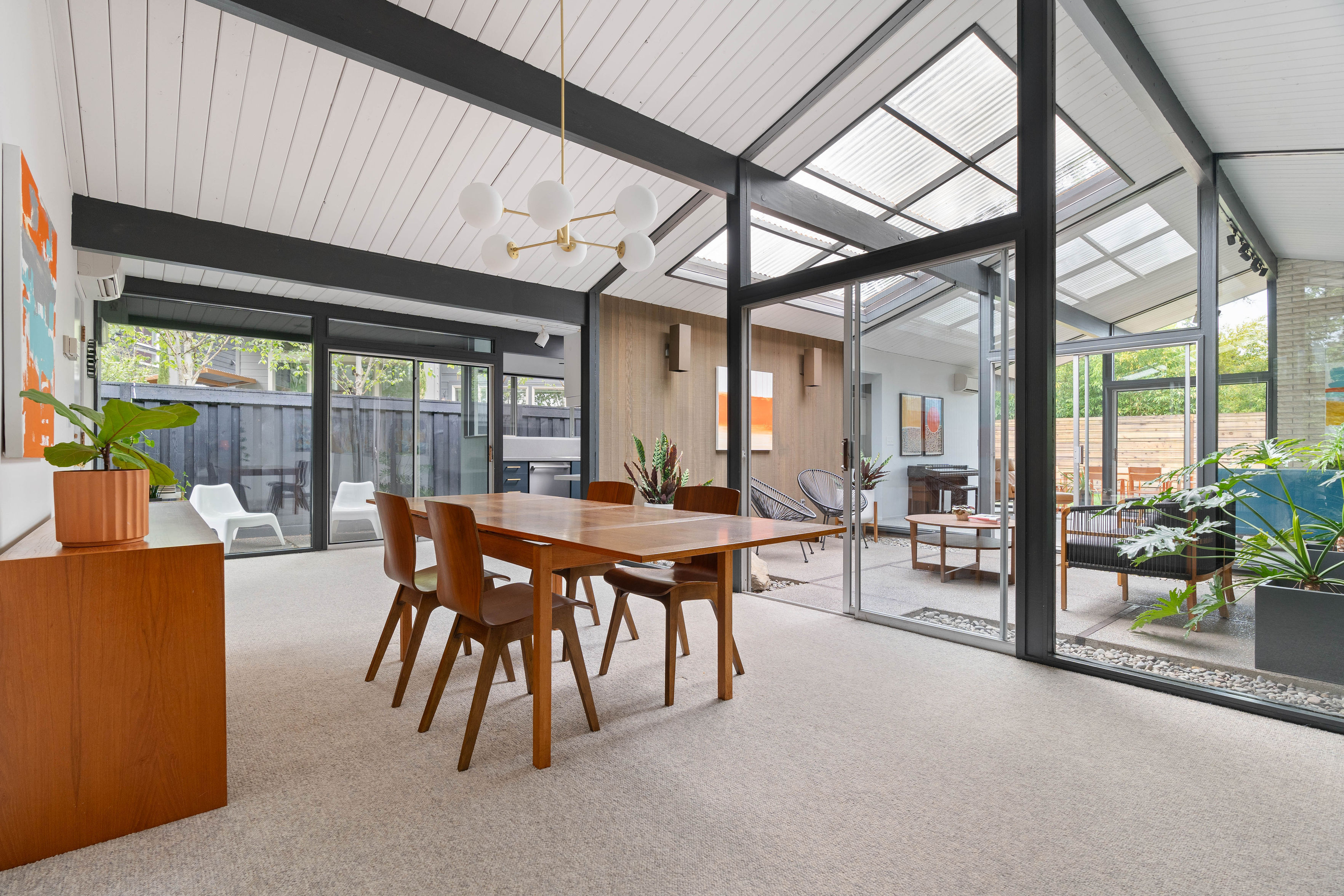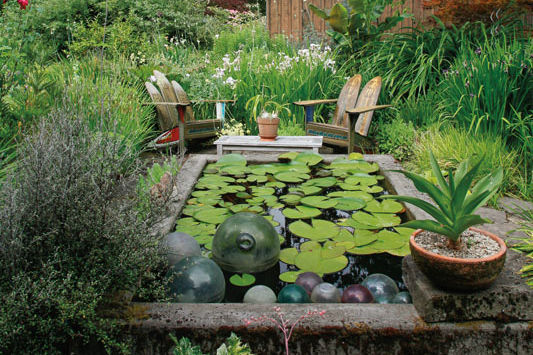
A Northwest Garden with Global Soul
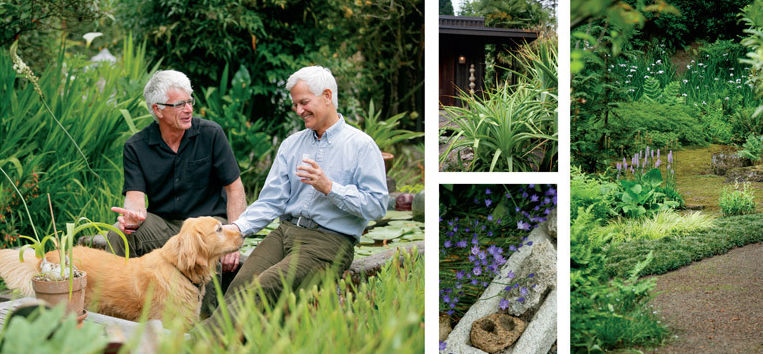
CLOCKWISE FROM LEFT: Norm Kalbfleisch (left) and Neil Matteucci relax with Vita. A hefty clump of Kniphofia northiae blooms with fat, tiki-torch-like orange-and-yellow flowers in spring. Late spring brings on sheets of terrestrial orchids in the damp woodland and streamside moss garden areas. A blue-flowered Triteleia laxa sprawls over a handsome granite trough from Antiques & Oddities and pieces of antique tufa.
Image: Josh McCullough
Designed by architect Pietro Belluschi, the 1949 home of Norm Kalbfleisch and Neil Matteucci could not be more quintessentially Northwest Style. The understated ensemble of glass and cedar hugs a wooded hillside that drops down to a restored stream. On one side, Douglas fir trees provide habitat for native mosses, ferns, and songbirds; on the other, Japanese-style clipped hedges surround a neat lawn.
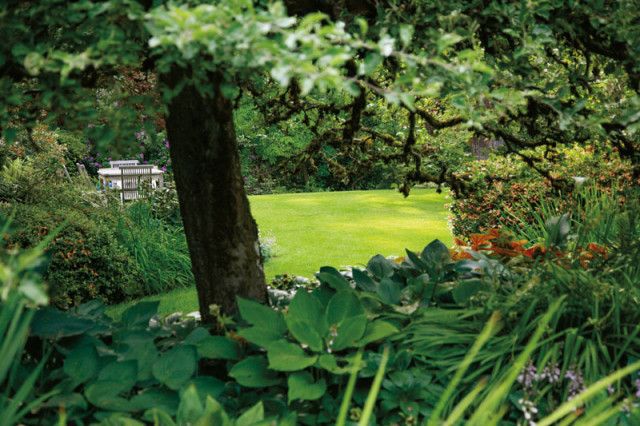
Image: Josh McCullough
Yet beneath the tree boughs and behind the stalwart rhodies and azaleas lies a lush, global garden of horticultural treasures: hot pink shooting stars, exotic lady slipper orchids, and rare ferns, plus an enviable collection of May apple and dogtooth violet. The effect is uncanny and luxurious to the casual observer—and to a plant geek, heart-stopping.
Lured by an ad that read “a modern house with mature landscaping and a greenhouse,” Kalbfleisch and Matteucci (now 59 and 56) bought the property 20 years ago. As they learned more about Belluschi—a native Italian who helped pioneer a Portland modernism influenced by both Europe and Japan—they realized they had found a perfect match for their own far-reaching interests in horticulture. “Belluschi is known for his skillful way of bringing the inside out and the outside in,” says Matteucci. “The garden borrows inspiration from the house, which has strong Japanese elements and a powerful connection with the woodland surrounding it. We want to honor that.”
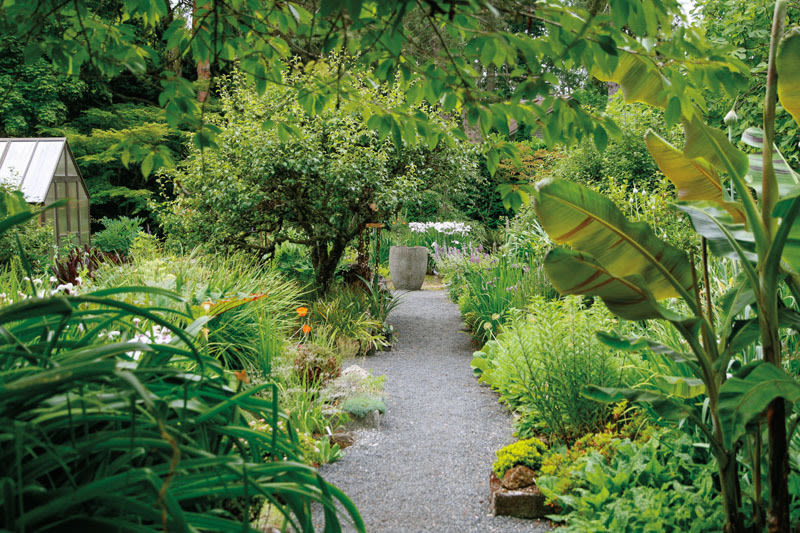
Image: Josh McCullough
The duo of doctors has been collecting exotic plants since the ’80s, when, as Kalbfleisch recalls it, “we first set eyes on an immense clump of Trillium kurabayashii at the Leach Botanical Garden.” The blood-red flowers and patterned leaves inspired them to track down seeds and propagate the plant themselves. When it finally flowered seven years later, every visitor to their garden coveted it. Soon the doctors’ curiosity about plants (and their online searches for them) connected the pair to what Matteucci describes as an “international community (a fraternity or sorority of sorts) of plant dweebs.”

Filled with water lilies and antique Japanese fish floats, the pond can be enjoyed from chairs fashioned from recycled water skis.
Image: Josh McCullough
They dubbed their budding home nursery “Woodland Way,” mainly selling rare plants at spring sales such as the Tryon Creek Trillium Festival and Hortlandia, the Hardy Plant Society’s plant and art sale.
They spent the first five years at the Belluschi house removing debris. What was a burn pile became a moss garden. They stabilized a slumping hillside—the neighbor’s fence sliding with it—with long stretches of gabion wall. They gave a new rock bank to a stream once seasonally covered by erosion. “There’s a huge amount of infrastructure that you don’t see in this garden,” Matteucci says.
While the garden feels tranquil, the topography actually creates a horticulturally complex set of microclimates. There’s wet shade by the stream, damp sun in a seep, dry shade beneath firs, and hot, sunny beds. The diversity offers continuous opportunity to grow new plants, and plenty of day-to-day design and dirt-under-the-fingernails work for two busy physicians. Increasingly strict laws on plant imports have pruned the couple’s international plant swapping. But 20 years of devoted garden-building has yielded a stunning botanical complement to Belluschi’s architecture, and a showcase for Portland’s garden community. And for the doctors, “this garden grounds us,” says Kalbfleisch. “Working in nature and getting our hands dirty every day is a big part of that stabilizing process.”

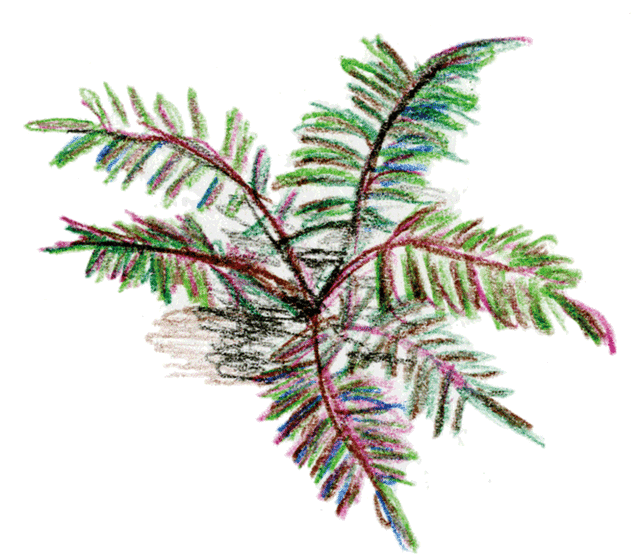
Hard Water Fern
Blechnum wattsii
A semi-evergreen fern with a tropical look of early, bronze-maroon foliage turning green
Growing tips: Damp, semishaded woodland conditions best, but adaptable
find it: Sebright Gardens, Brooks
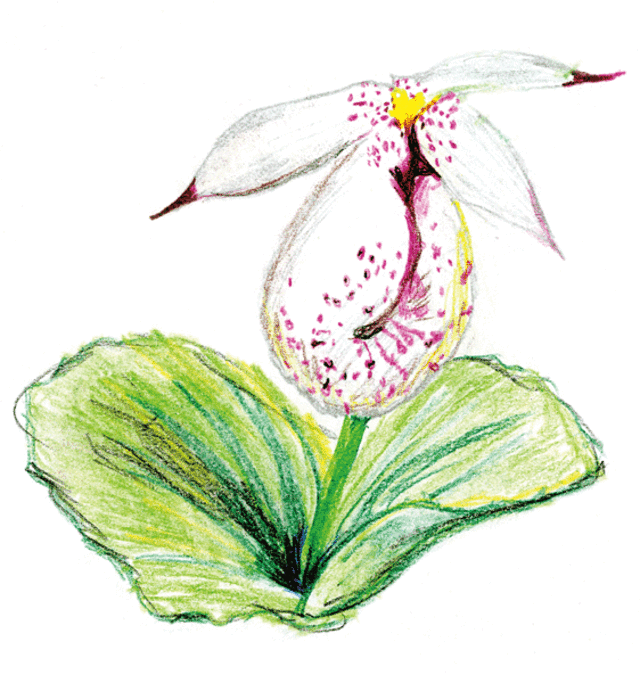
Japanese Lady Slipper
Cypripedium japonicum
Pleated foliage resembles “praying hands,” with puffy, early-spring pink and white flowers.
Growing tips: Ideal in rich, mulched soil with morning sun (bright woodland)
find it: Keeping It Green Nursery, Stanwood, Wash.
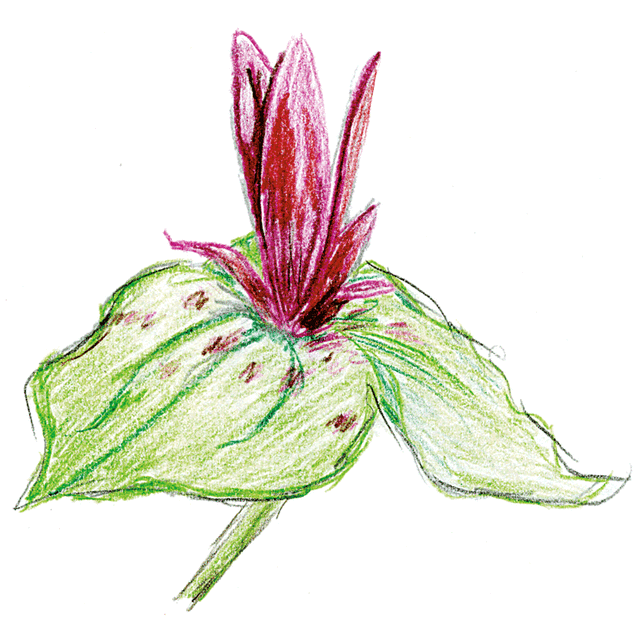
Giant Purple Wakerobin
Trillium kurabayashii
A Siskiyous native with dark green-and silver-mottled leaves followed by blood-red flowers
Growing tips: Appreciates good drainage, dry conditions with morning sun (woodland edges)
find it: Dancing Oaks Nursery, Monmouth
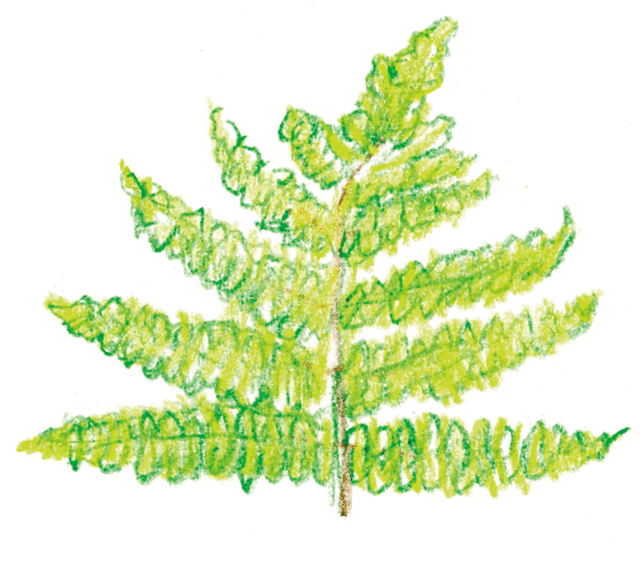
Oriental Ostrich Fern
Pentarhizidium orientalis
Needle-like new spiraling crosiers emerge in spring, unfurling up to three feet high, with prehistoric-looking foliage.
GROWING TIPS: Light woodland is best.
find it: Fancy Fronds Nursery, Gold Bar, Wash.
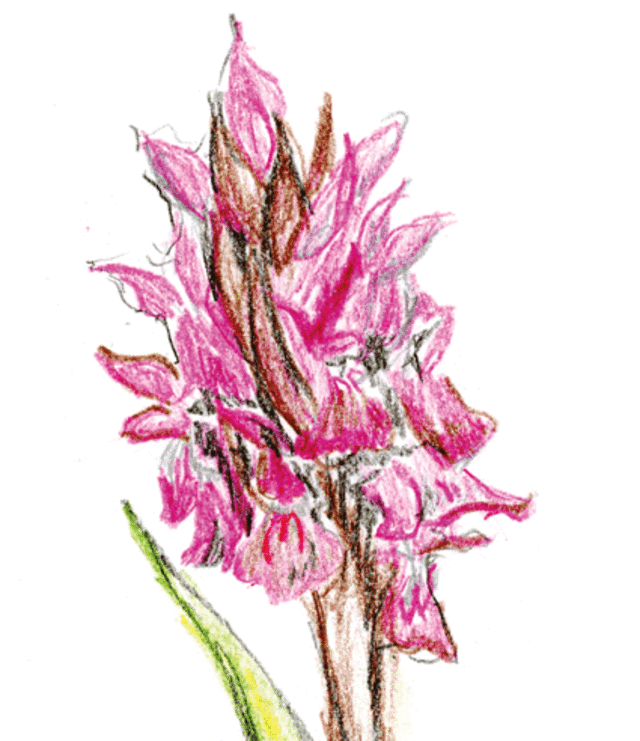
European Marsh Orchid
Dactylorhiza species and hybrids
Striking, mottled leaves and wandlike purple flowers on vigorous, reseeding plants
GROWING TIPS: Damp soil and plenty of sun are ideal conditions.
find it: Far Reaches Farm, Port Townsend, Wash.

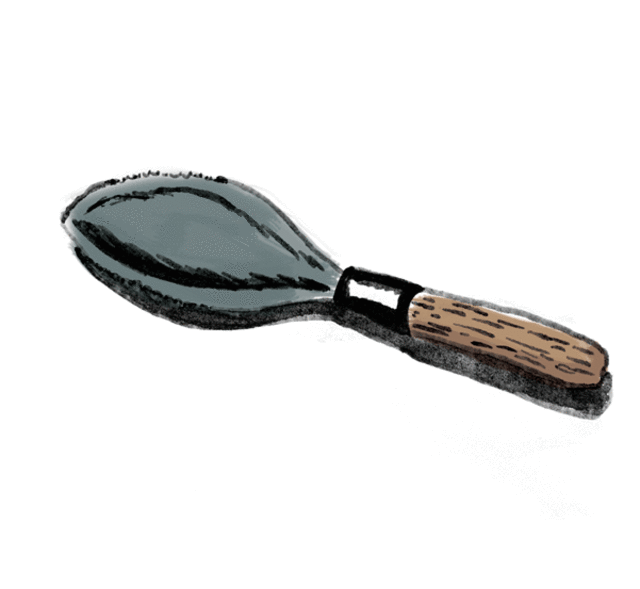
Classic Soil Scoop
Like a cupped hand, but bigger, with a serrated edge that’s ideal for mixing potting soil and scooping it into pots. $21.95 at the Earthly Way Inc
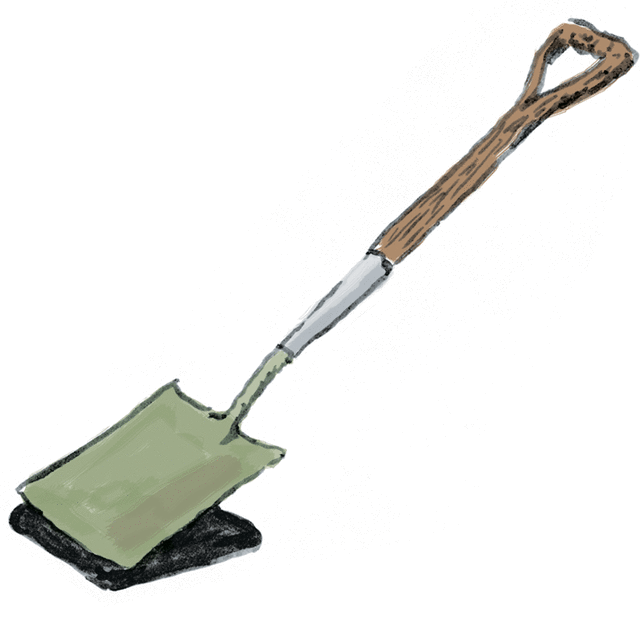
Flat-Backed Garden Spade
Perfect for digging and edging, high- quality spades are expensive but worth it. $82 at Clarington Forge
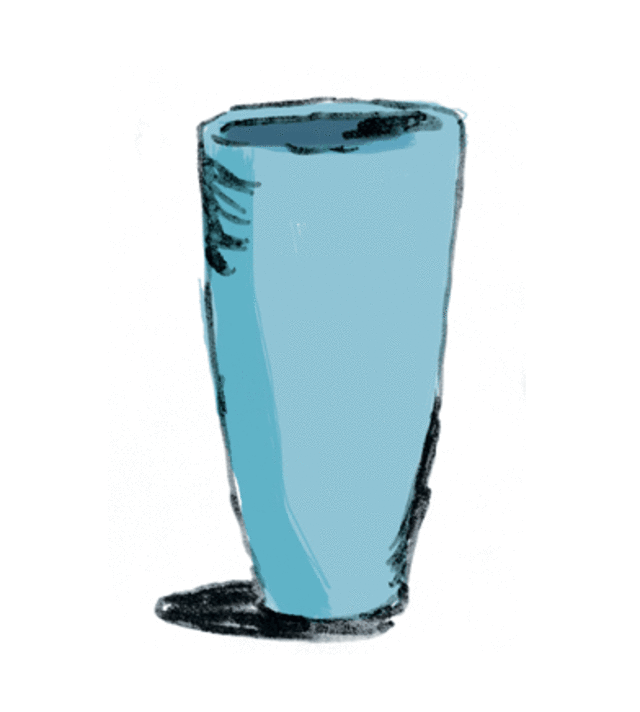
Vintage Crucibles
For beautiful planters, seats, and water basins, these old foundry basins come in various sizes and are great for washing hands, providing water for birds, and just looking smart in the landscape. From $50 at industrial antique stores and on Craigslist
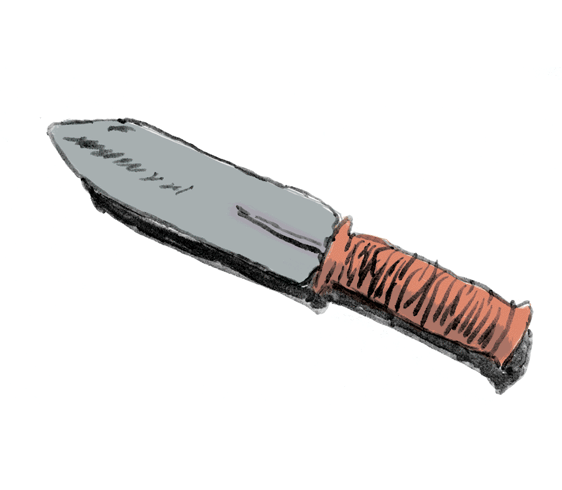
Hori Hori
These Japanese soil knives are great for weeding, digging, and plant-dividing. $35 at Diggit Inc
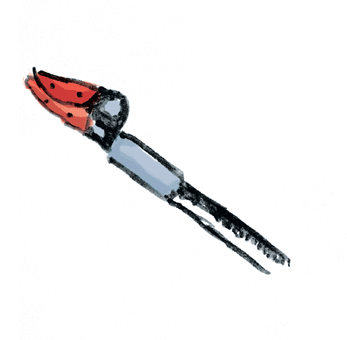
Long Reach Pruner
Reaching up to 10 feet, these telescoping clippers are great for maintaining trees and tall shrubs without a ladder in a woodland garden. From $128.29 at Wood Avenue

